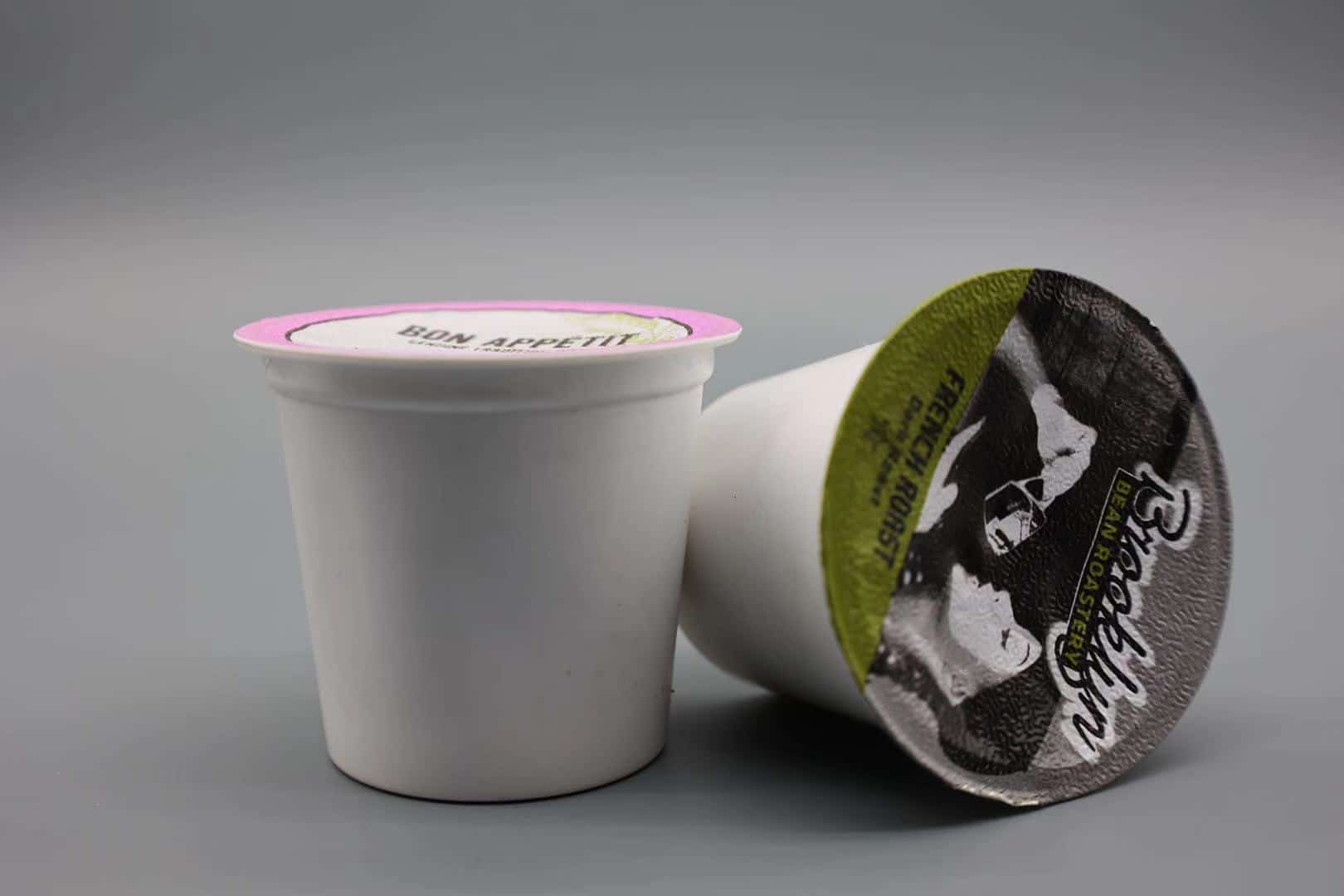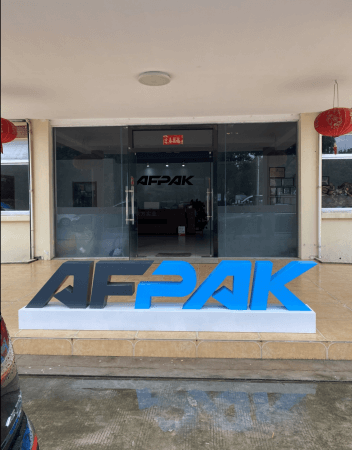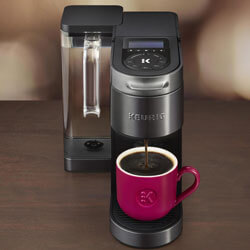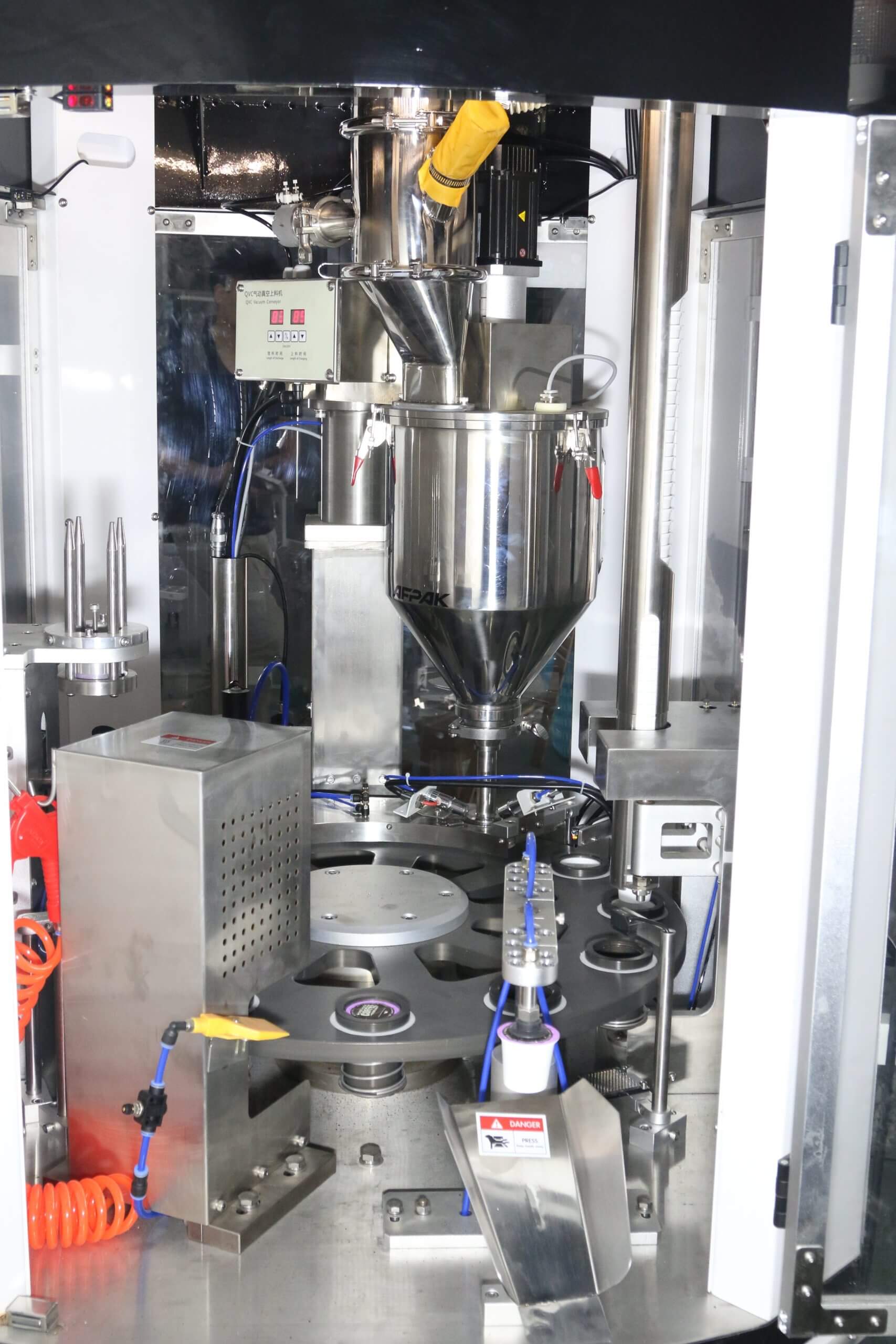Feeling overwhelmed by the choices in K cup filling machines? Don't know where to start finding the right one for your business? You are not alone.
AFPAK K cup filling machines stand out due to their industry-expert design, user-friendly operating system, and sales team with first-hand customer experience. These factors combine to create machines that are efficient, reliable, and fit customer needs.
It's understandable to be confused by all the options. But, stick with me, and we'll explore the key differences that set AFPAK machines apart.
What is the difference between inline machines and rotary machines?
Struggling to decide between inline and rotary filling machines? Is the choice impacting your production efficiency and budget? It is a big decision.
Inline machines fill containers in a straight line, while rotary machines fill them in a circular motion. Inline machines are simpler and often cheaper, but rotary machines are faster and better for high-volume production.
Choosing between these two types depends on what you need. Think about how much you produce, and how much you have to spend. Let's break down the details.
| Feature | Inline Filling Machines | Rotary Filling Machines |
|---|---|---|
| Operation | Fills containers in a straight line. | Fills containers in a circular, rotating motion. |
| Speed | Generally slower. | Faster, ideal for high-volume production. |
| Complexity | Simpler design and operation. | More complex design and operation. |
| Cost | Typically less expensive. | Usually more expensive. |
| Space | May require more linear space. | More compact footprint. |
| Applications | Lower volume, simpler filling needs. | High volume, complex filling needs. |
| Maintenance | Easy to clean and change. | More difficult to clean. |
Inline filling machines work well for smaller operations. Because containers move along a straight conveyor, filling, capping, and labeling happen one after the other. This setup is easy to use and maintain. However, it’s not the fastest option.
Rotary filling machines, on the other hand, are built for speed. Containers are placed on a rotating platform. Multiple stations work at the same time. Filling, capping, and labeling happen almost at once. This makes them much faster than inline machines. But, they are more complex and cost more. Consider a rotary machine if you have a large production volume.
What is the main characteristic of auger filling machines?
Confused about when to use an auger filling machine? Worried about accuracy and consistency with powders and granular products?
The main characteristic of auger filling machines is their use of an auger screw to precisely measure and dispense dry products, like powders and granules. This ensures consistent fills by volume.
Auger fillers are special because of how they handle dry goods. They use a rotating screw. This section will explain how they work.
| Feature | Description |
|---|---|
| Mechanism | Uses a vertical screw (auger) to dispense product. |
| Accuracy | Provides high accuracy and consistency in filling. |
| Product Types | Ideal for powders (flour, coffee, spices), granules, and other dry, free-flowing and non-free-flowing products. |
| Speed | Can be adjusted to match production needs. |
| Maintenance | Relatively easy to clean and maintain. |
| Versatility | Can handle a wide range of fill volumes. |
The auger screw rotates within a hopper. It pushes the product down through a funnel and into the container. The amount of product dispensed is controlled by the number of rotations of the screw. This method ensures very accurate fills. It is especially good for products that need precise measurements.
Auger fillers are versatile. They can handle different types of dry products. Think about things like flour, coffee grounds, spices, and even some chemicals. They are a good choice if you need accuracy and consistency in your filling process.
What is rotary K cup filling machine?
Unsure about what a rotary K cup filling machine is and its benefits? Concerned about whether it's the right choice for your production line?
A rotary K cup filling machine is a type of packaging machine that fills containers as they rotate on a circular platform. This allows for high-speed, continuous filling, making it ideal for large-scale production.
Rotary K cup filling machines are all about efficiency. They are designed to fill a lot of containers quickly. Now, how do they work?
| Feature | Description |
|---|---|
| Operation | Containers are placed on a rotating turret, moving through various stations for filling, capping, and sealing. |
| Speed | High-speed operation, capable of filling hundreds or thousands of containers per hour. |
| Efficiency | Multiple operations occur simultaneously, reducing overall processing time. |
| Space Utilization | Compact design, efficient use of floor space. |
| Complexity | More complex than inline machines, requiring precise synchronization. |
| Cost | Higher initial investment, but cost-effective for high-volume production. |
In a rotary K cup filling machine, containers are placed on a rotating platform. This platform, or turret, moves the containers through different stations. Each station performs a specific task. One station might fill the container, another might place a cap, and another might seal it. Because all these actions happen at the same time, the process is very fast.
This type of machine is perfect for businesses that need to fill a large number of containers quickly. It’s common in industries like food and beverage, pharmaceuticals, and cosmetics.
What is the difference between rotary and non rotary engine?
Confused about the difference between rotary and non-rotary engines in the context of filling machines? Wondering which one is better for your needs? It isn’t clear to most.
In the context of machinery, "rotary" refers to components that move in a circular motion, like in rotary filling machines. "Non-rotary" refers to linear or reciprocating motion, like in inline machines. The main difference lies in how motion is used to perform tasks.
While the term "rotary engine" usually refers to a specific type of internal combustion engine (Wankel engine), here we are talking about motion. Think of movement, and its effects.
| Feature | Rotary Motion | Non-Rotary (Linear/Reciprocating) Motion |
|---|---|---|
| Movement | Circular motion around a central axis. | Straight-line motion back and forth. |
| Application | Rotary filling machines, rotary pumps. | Inline filling machines, piston pumps. |
| Speed | Generally allows for higher speeds. | Typically slower. |
| Complexity | Can be more complex to design and synchronize. | Simpler in design and operation. |
Rotary motion is all about circular movement. In a rotary filling machine, the platform that holds the containers rotates. This allows for a continuous, high-speed filling process.
Non-rotary motion, on the other hand, involves linear or reciprocating movement. In an inline filling machine, containers move along a straight conveyor. The filling heads might move back and forth or up and down. This type of motion is simpler but usually slower.
Choosing between rotary and non-rotary depends on your production needs. Rotary is faster and more efficient for high volumes. Non-rotary is simpler and often more cost-effective for smaller operations.
Conclusion
AFPAK K cup filling machines use smart design and easy-to-use systems. They reflect years of experience and direct customer feedback. This makes them stand out, offering practical solutions.




